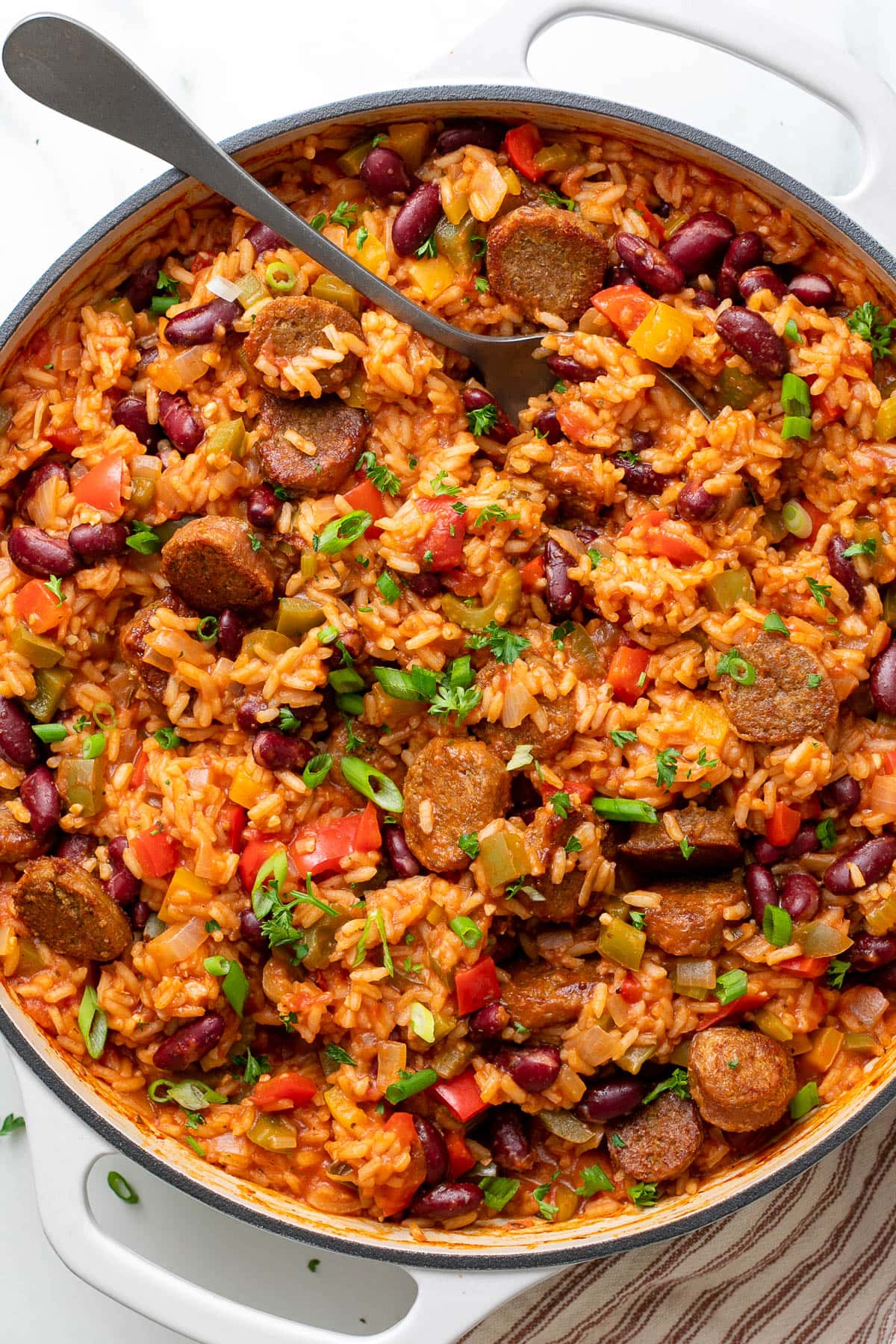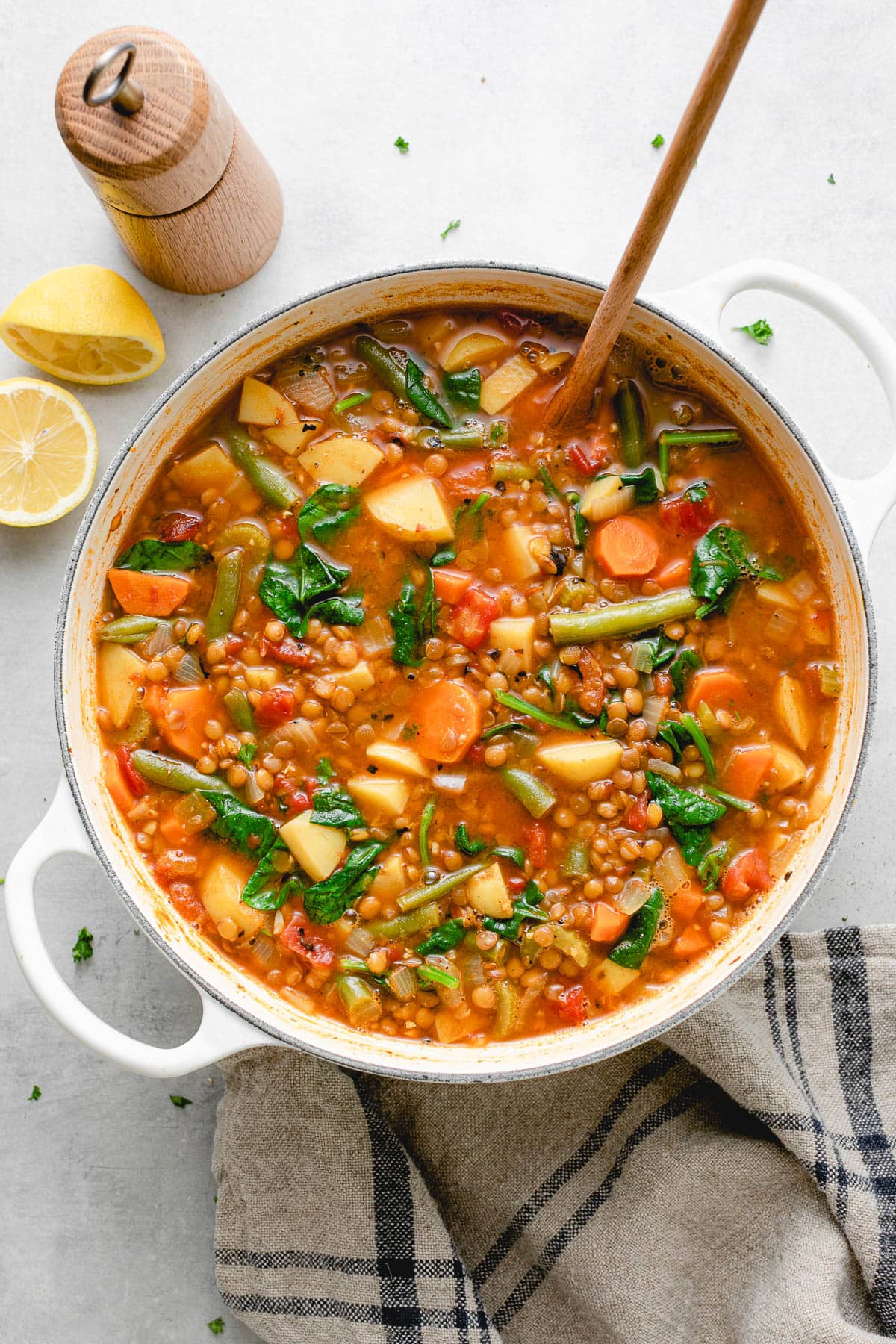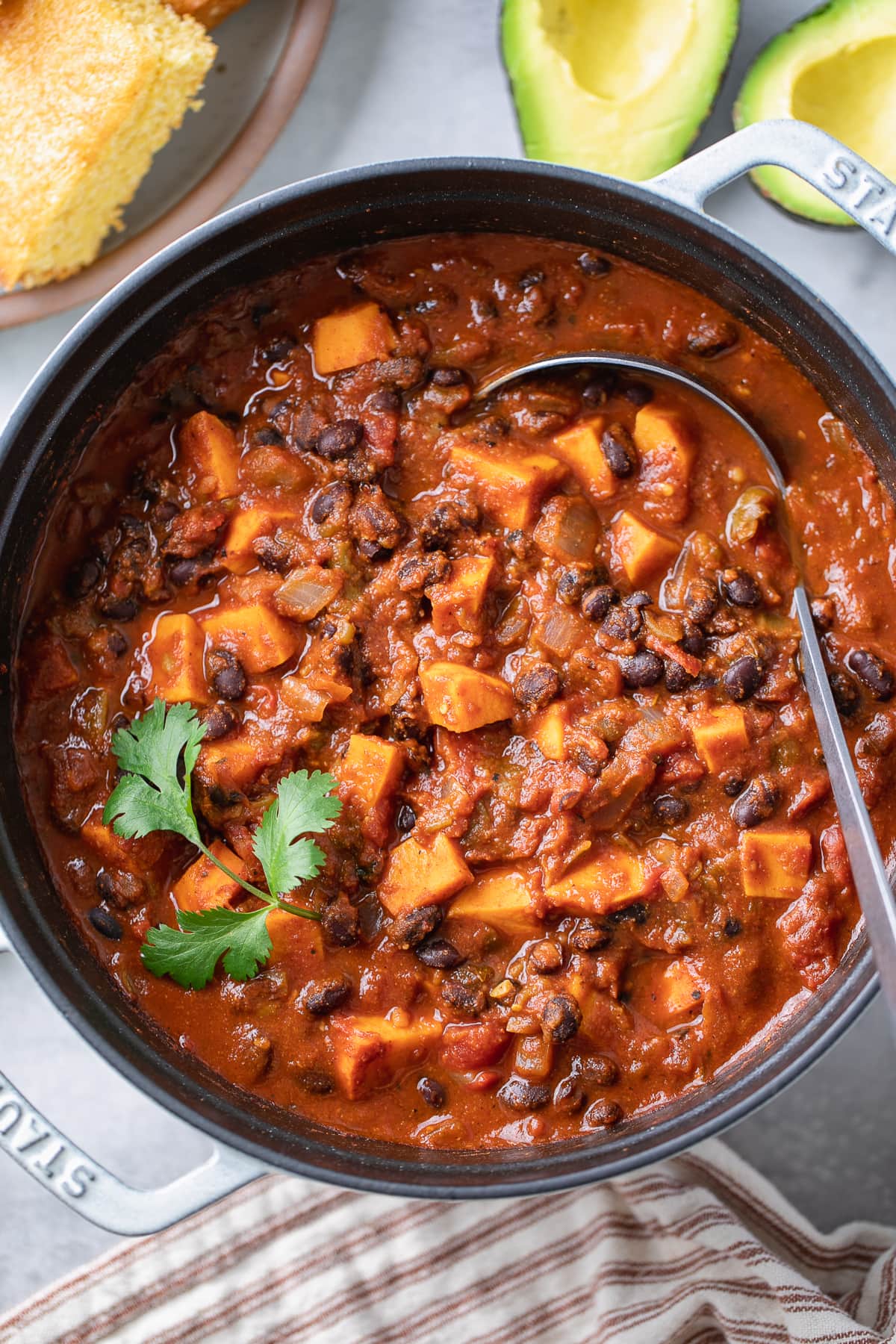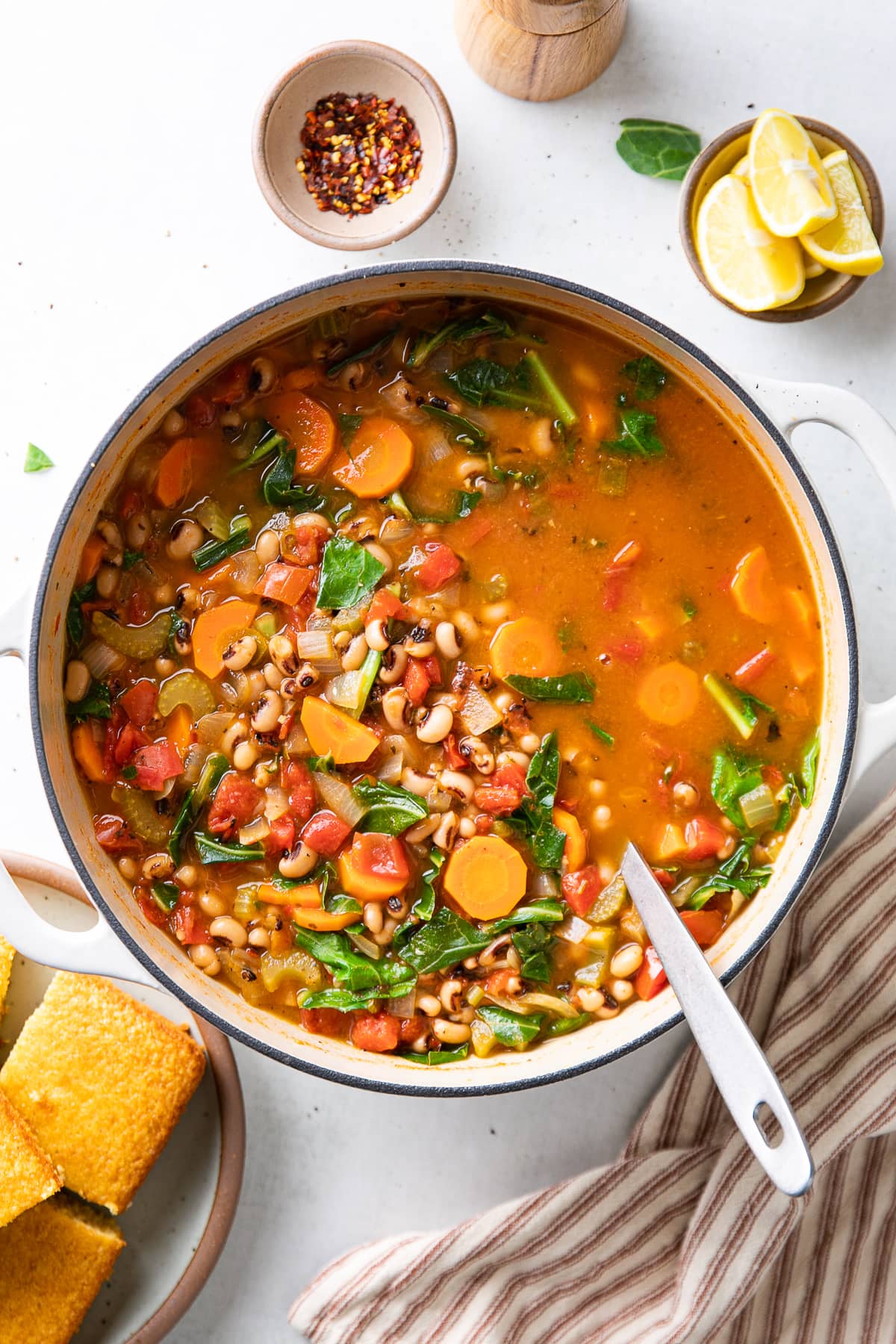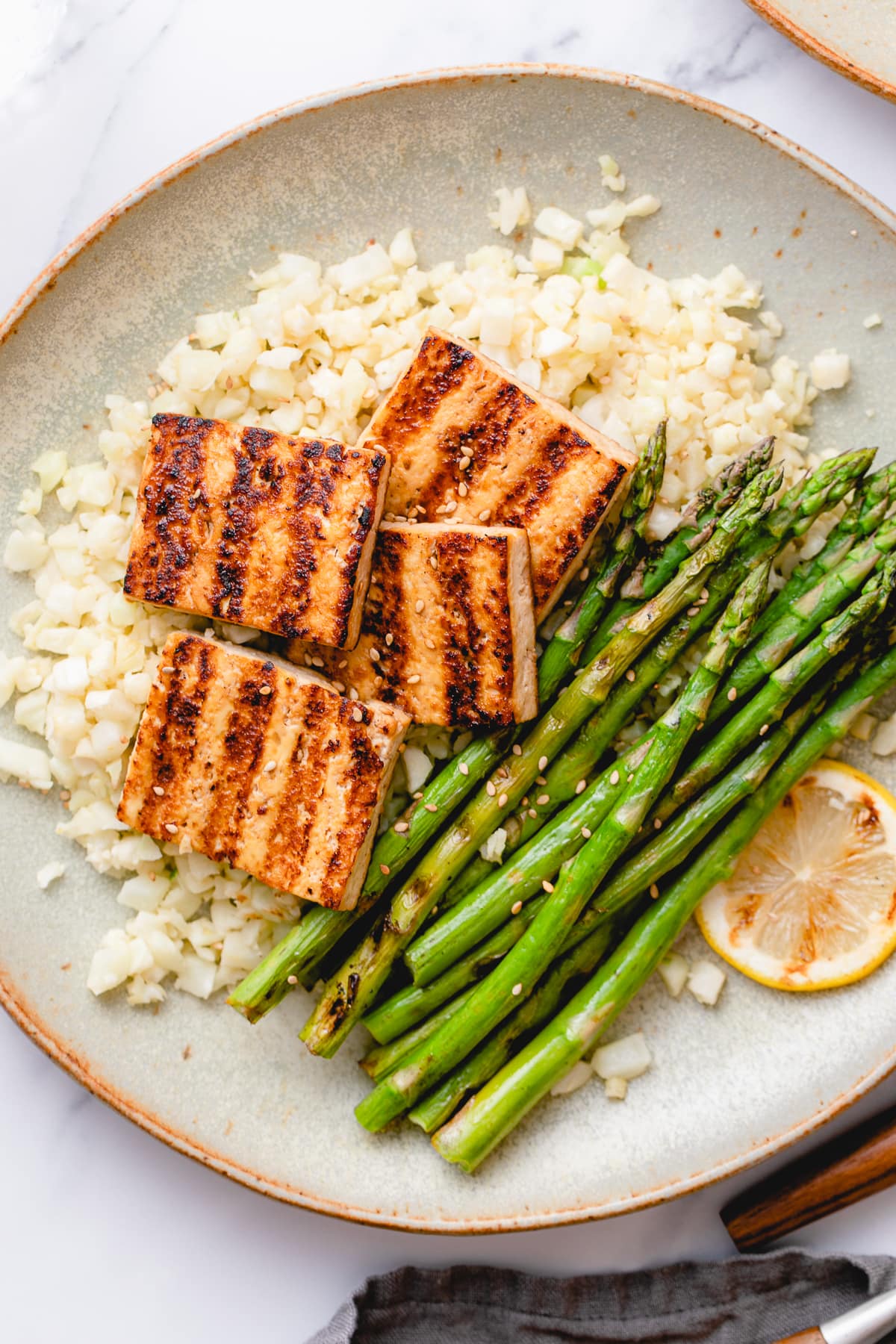12+ High-Protein Vegetables
Welcome to the world of high-protein vegetables, where nutritious meets delicious! 🌱 Learn about the top protein-rich veggies to help meet your daily requirements and maintain overall health!
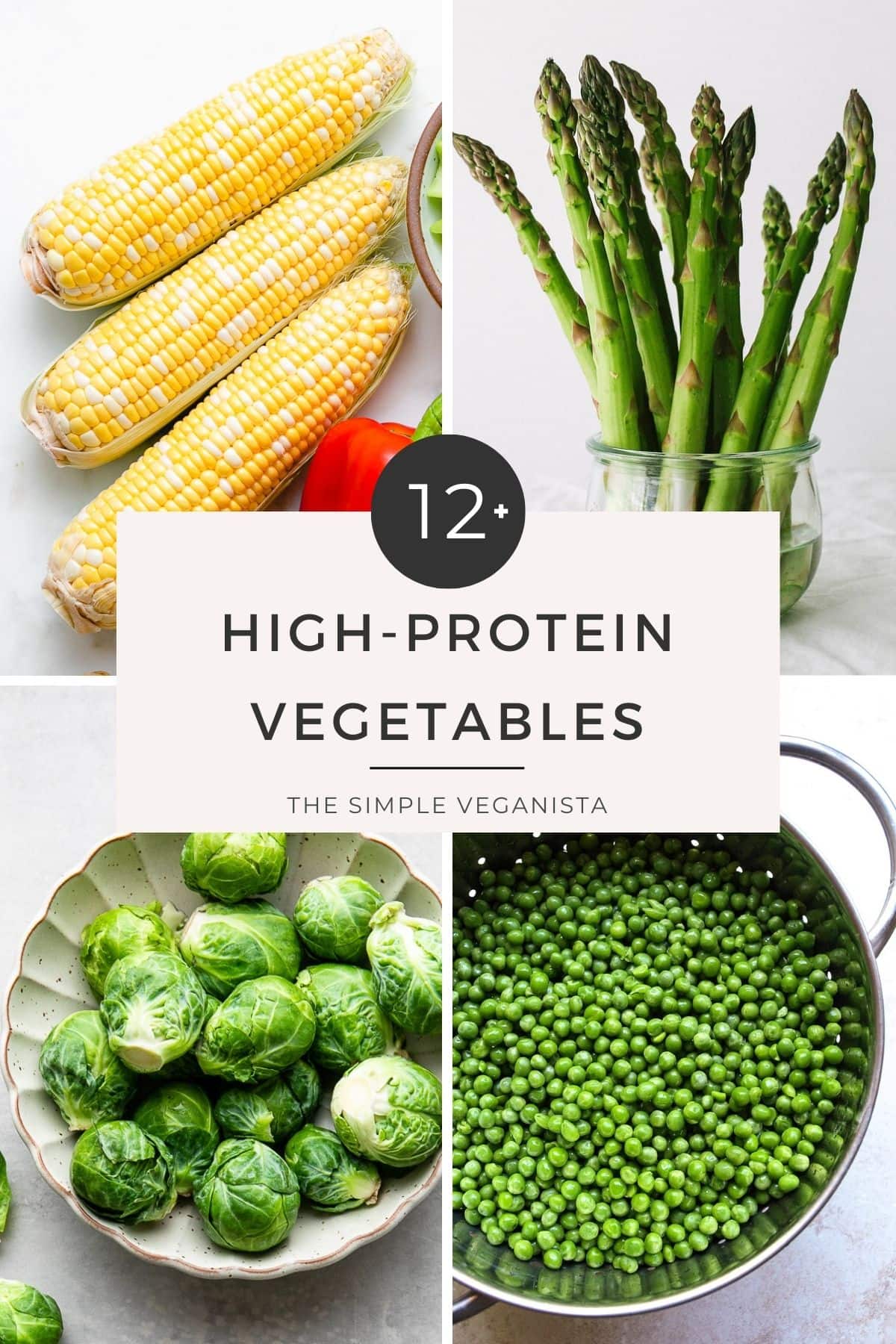
We are firm believers in the power of a plant-based diet to promote overall health and wellness without sacrificing taste or feeling satisfied!
One common misconception is that a diet of just plants lacks protein. However, vegetables can be an excellent source of protein, and incorporating them into your meals can help ensure you’re meeting your daily needs.
Today, we’ll explore vegetables high in protein that are perfect for your plant-based journey. Plus, you’ll find ways to use them in recipes, so you won’t be left feeling on your own!
Edamame
Edamame, or young green soybeans, are plump, oval-shaped, and typically sold in their pods which are inedible. These vibrant green beans are rich in protein and fiber, and a number of vitamins and minerals, including vitamin K, folate, and iron. They’ve been shown to have a number of health benefits, including reducing the risk of certain types of cancer, promoting heart health, and supporting weight management. Learn more at WebMD.
- Edamame: 18 grams of protein per cooked cup
Edamame has a slightly sweet and nutty flavor that is often described as earthy. They can be steamed or boiled and seasoned with a sprinkle of sea salt for a tasty appetizer or snack. They are delicious tossed into green salads, quinoa salads, grain bowls, or stir-fries for a healthy boost of plant based protein.
Green Peas
Green peas are a type of legume often used as a vegetable. They are small, round, and bright green, with a sweet, slightly grassy flavor. In addition to being a good source of protein, fiber, vitamins, and minerals, green peas have been shown to have a number of health benefits, including reducing the risk of certain types of cancer, promoting heart health, and supporting weight management. Learn more at WebMD.
- Green Peas: 8 grams of protein per cooked cup
Green peas can be tossed into salads and soups. We love them in macaroni salad or mixed into main dishes like vegetable paella, pasta dishes, and grain bowls. You can even make a delicious green pea puree to serve as a side dish or use as a base for a vibrant sauce.
Spinach
Spinach, a nutrient-dense leafy green, is a protein-rich vegetable that is low in calories. This dark green vegetable is packed with essential nutrients like vitamins A, C, and K, folate, iron, and calcium. Spinach has been shown to have a number of health benefits, including reducing the risk of certain types of cancer, promoting heart health, and supporting eye health. Learn more at WebMD.
- Spinach: 5 grams of protein per cooked cup
With its slightly bitter, mild earthy flavor and tender texture, spinach is versatile and to use. Enjoy it raw in salads, sandwiches, or blended into green smoothies for a nutrient boost. Cook it as a side dish or add it to soups, stews, and grain bowls.
Sweet Corn
Sweet corn is a versatile grain that is colorful and rich in protein. This golden treasure offers essential nutrients like vitamins A, C, and B-complex, fiber, and minerals like manganese and phosphorus. Corn has been shown to have a number of health benefits, including promoting heart health, supporting digestive health, and reducing the risk of certain types of cancer. Read more at Healthline.
- Sweet Corn: 5 grams of protein per cooked cup
Sweet corn can be enjoyed on the cob, grilled, boiled, or roasted. We love adding corn kernels to salads and soups for a burst of natural sweetness and nutrition. Cornmeal, another corn-derived product, can be used to create plant-based dishes like polenta or cornbread.
Broccoli
Broccoli, a member of the cruciferous vegetable family, has a tree-like structure with a stalk and branches that are covered in small, green florets. This protein-rich vegetable also contains essential nutrients like vitamins A, C, and K, fiber, potassium, and antioxidants. Broccoli’s health benefits include reducing the risk of certain types of cancer, promoting heart health, and supporting digestive health. Read more at Healthline.
- Broccoli: 4 grams of protein per cooked cup
The versatility of broccoli makes it an easy addition to a variety of dishes. You can roast it in the oven to bring out its natural sweetness, steam it for a tender side dish, or sauté it with other veggies for a delicious stir-fry. You can also incorporate it into soups, salads, and pasta dishes for a boost of nutrition and flavor.
Asparagus
Asparagus is an elegant green vegetable with a stalk and pointed tip. These tender green spears provide protein, fiber, and an array of essential nutrients like vitamins A, C, and K, folate, fiber, and antioxidants. The health benefits of asparagus include reducing the risk of certain types of cancer, promoting heart health, and supporting digestive health. Read more at Healthline.
- Asparagus: 4 grams of protein per cooked cup
Asparagus is a versatile veggie that can be roasted, grilled, or steamed as a side dish. Or toss it chopped into salads or pasta dishes for a burst of flavor and nutrition. We love it pureed into a creamy asparagus soup!
Brussels Sprouts
Brussels sprouts are a type of cruciferous vegetable that is related to broccoli, cabbage, and cauliflower. They are low in calories but high in fiber and a good source of plant-based protein. Brussels sprouts are rich in vitamins C & K, folate, and potassium and contain compounds that have been shown to have a positive impact on heart health, including reducing the risk of heart disease. Read more at WebMD.
- Brussels Sprouts: 4 grams of protein per cooked cup
With their unique flavor and texture, Brussels sprouts can be steamed, sauteed, or shredded for salad. We love them roasted in the oven, which brings out their natural sweetness and creates a delicious, caramelized exterior.
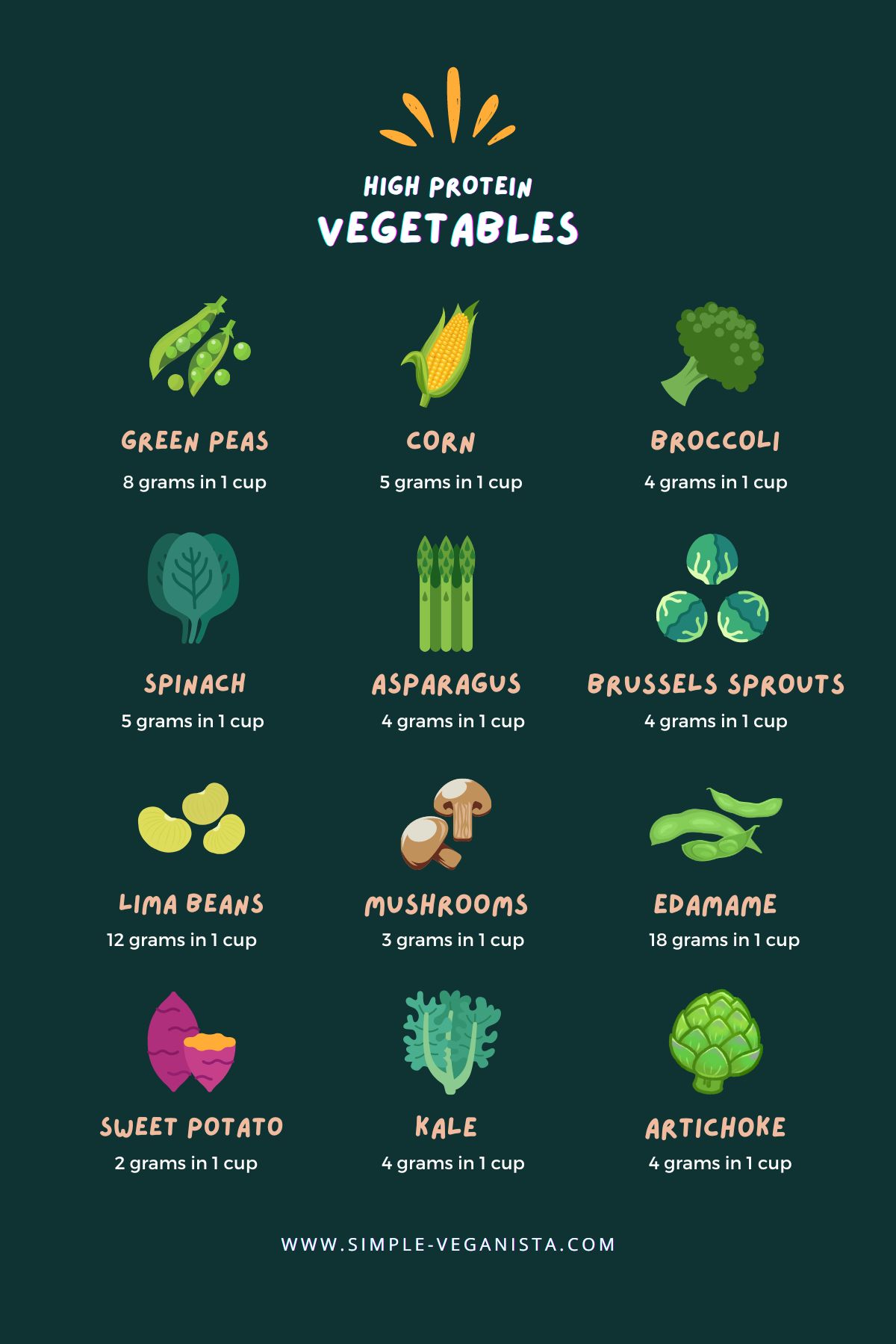
Lima Beans
Lima beans, also known as butter beans, are large, oval-shaped beans that are green or cream-colored. These creamy legumes not only offer an impressive amount of protein but are also rich in essential nutrients like fiber, vitamins A and C, iron, potassium, and magnesium. Learn more at WebMD.
- Lima Beans: 12 grams of protein per cooked cup
With their mild flavor and buttery texture, lima beans can be boiled and roasted. They can also be mashed or pureed to make dips or spreads. Enjoy them in a comforting bean soup, create a protein-packed salad, or mix them into stews and casseroles for added nutrition and flavor.
Artichokes
Artichokes are green, spiky vegetables with a heart-shaped center and delicate flavor. These protein rice vegetables are low in calories and rich in essential nutrients like fiber, vitamins C and K, folate, magnesium, and antioxidants. Health benefits include reducing the risk of certain types of cancer, promoting heart health, and supporting digestive health. Read more at Healthline.
- Artichokes: 4 grams of protein per cooked medium artichoke
Preparing and enjoying fresh artichokes may seem like a challenge, but their delicious taste and nutritional benefits make it worth the effort. You can steam, boil, or roast whole artichokes and then savor the tender leaves and heart by dipping them in your favorite sauce. Alternatively, you can use marinated artichoke hearts in salads, pasta dishes, or as a topping for plant-based pizzas.
Mushrooms
Mushrooms, with their earthy and umami-rich flavors, are a type of fungi that come in a variety of shapes and sizes and can be white, brown, or black in color. While not as high in protein as some other vegetables, they still provide a notable amount of plant-based protein, along with a variety of essential nutrients like vitamins B and D, selenium, potassium, and antioxidants. Read more at WebMD.
- Mushrooms: 3 grams of protein per cooked cup
Their unique texture and savory taste make mushrooms a versatile and satisfying ingredient in plant-based dishes. They can be sautéed, grilled, and roasted. We love them as a meat substitute in recipes such as portobello fajitas, soups, and stir-fries.
Kale
Kale, a nutrient-dense leafy green that can be curly or smooth, is a member of the cruciferous vegetable family. This robust green provides a good amount of protein, fiber, essential nutrients like vitamins A, C, and K, fiber, calcium, and antioxidants. Kale benefits include reducing the risk of certain types of cancer, promoting heart health, and supporting digestive health. Read more at Healthline.
- Kale: 2 grams of protein per raw cup, 4 grams of protein per cooked cup
With its hearty texture and earthy flavor, kale can be enjoyed raw in salads or smoothies. We love it sautéed for a flavorful side dish or added to soups, stews, and grain bowls for a boost of nutrition and color. Kale can also be transformed into a healthy snack by baking it into crispy kale chips.
Sweet Potato
Sweet potatoes have a reddish-brown or copper skin and a bright orange flesh. These starchy root vegetables not only provide a decent amount of protein but are also packed with essential nutrients like vitamins A and C, fiber, potassium, and manganese. Sweet potatoes promote heart health, support digestive health, and may reduce the risk of certain types of cancer. Read more at Healthline.
- Sweet Potato: 2 grams of protein per cooked cup (mashed)
The versatility of sweet potatoes makes them a delicious addition to your diet. Roast or bake them as a simple side dish. Create a flavorful mash or purée, or even incorporate them into desserts like pies and muffins. Sweet potatoes also work well in savory dishes like soups, chili, and grain bowls, adding color and nutrition to your plate.
Avocado
Avocado, a unique fruit with a smooth, creamy texture, is a delicious source of plant-based protein. While not as high in protein as some other vegetables, avocados still provide a valuable amount, along with essential nutrients like healthy monounsaturated fats, fiber, vitamins E and K, potassium, and antioxidants. Read more at Healthline.
- Avocado: 3 grams of protein per medium-sized avocado
With their rich flavor and versatility, avocados can be sliced up and put in sandwiches or wraps. Blend them into smoothies or pudding for a creamy texture. We love them stuffed or mashed into scrumptious guacamole. Avocado can also be used as a base for a creamy sauce or dressings.
Ways to Use high-Protein Vegetables
Whether you’re a vegan, vegetarian, or simply looking to incorporate more nutrient-rich foods into your diet, these powerhouse veggies have you covered!
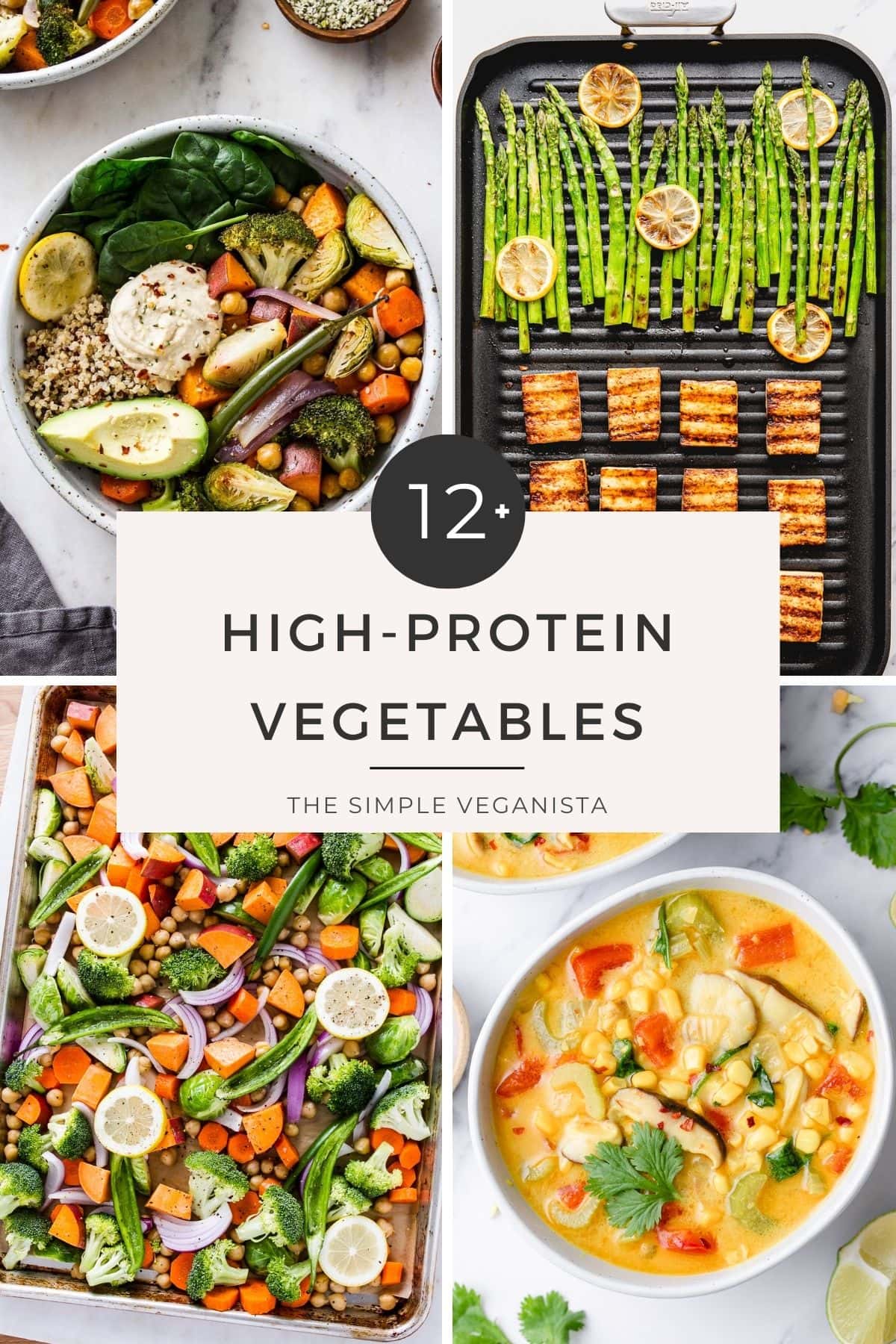
These high-protein vegetables are wonderful additions to your diet. By incorporating these nutrient-dense veggies into your meals, you’ll be fueling your body with the protein it needs while reaping the health benefits of a plant-based lifestyle.
We are all about embracing the power of plants for a healthier, happier life. So, go ahead and enjoy these vegetables high in protein as you continue your journey toward better health.
High-Protein Vegetable Recipes
Here’s a variety of high-protein vegan recipes with at least 15 grams of protein per serving using vegetables in combination with other whole-food plant-based ingredients to get you started!


